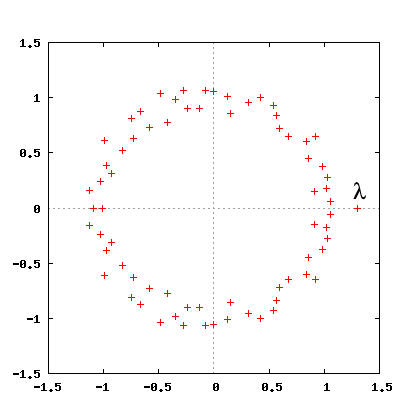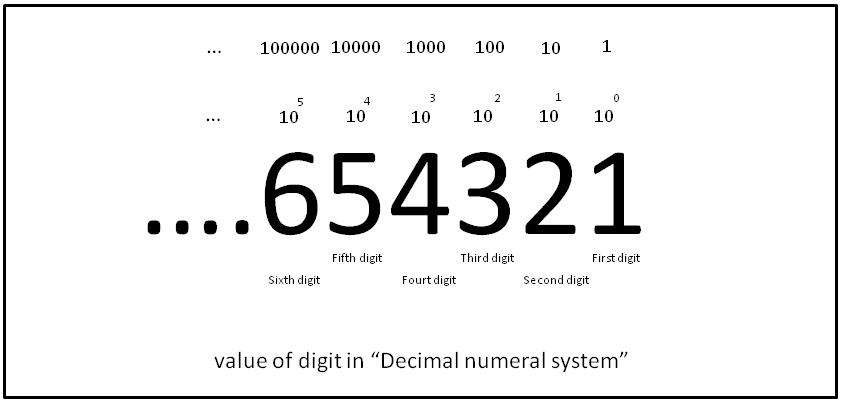|
Conway's Constant
In mathematics, the look-and-say sequence is the sequence of integers beginning as follows: : 1, 11, 21, 1211, 111221, 312211, 13112221, 1113213211, 31131211131221, ... . To generate a member of the sequence from the previous member, read off the digits of the previous member, counting the number of digits in groups of the same digit. For example: * 1 is read off as "one 1" or 11. * 11 is read off as "two 1s" or 21. * 21 is read off as "one 2, one 1" or 1211. * 1211 is read off as "one 1, one 2, two 1s" or 111221. * 111221 is read off as "three 1s, two 2s, one 1" or 312211. The look-and-say sequence was analyzed by John Conway Reprinted as after he was introduced to it by one of his students at a party. The idea of the look-and-say sequence is similar to that of run-length encoding. If started with any digit ''d'' from 0 to 9 then ''d'' will remain indefinitely as the last digit of the sequence. For any ''d'' other than 1, the sequence starts as follows: : ''d'', 1''d' ... [...More Info...] [...Related Items...] OR: [Wikipedia] [Google] [Baidu] |
Addison-Wesley
Addison–Wesley is an American publisher of textbooks and computer literature. It is an imprint of Pearson plc, a global publishing and education company. In addition to publishing books, Addison–Wesley also distributes its technical titles through the O'Reilly Online Learning e-reference service. Addison–Wesley's majority of sales derive from the United States (55%) and Europe (22%). The Addison–Wesley Professional Imprint produces content including books, eBooks, and video for the professional IT worker including developers, programmers, managers, system administrators. Classic titles include '' The Art of Computer Programming'', '' The C++ Programming Language'', '' The Mythical Man-Month'', and '' Design Patterns''. History Lew Addison Cummings and Melbourne Wesley Cummings founded Addison–Wesley in 1942, with the first book published by Addison–Wesley being Massachusetts Institute of Technology professor Francis Weston Sears' ''Mechanics''. Its first comput ... [...More Info...] [...Related Items...] OR: [Wikipedia] [Google] [Baidu] |
Algebraic Numbers
In mathematics, an algebraic number is a number that is a root of a non-zero polynomial in one variable with integer (or, equivalently, rational) coefficients. For example, the golden ratio (1 + \sqrt)/2 is an algebraic number, because it is a root of the polynomial X^2 - X - 1, i.e., a solution of the equation x^2 - x - 1 = 0, and the complex number 1 + i is algebraic as a root of X^4 + 4. Algebraic numbers include all integers, rational numbers, and ''n''-th roots of integers. Algebraic complex numbers are closed under addition, subtraction, multiplication and division, and hence form a field, denoted \overline. The set of algebraic real numbers \overline \cap \R is also a field. Numbers which are not algebraic are called transcendental and include and . There are countably many algebraic numbers, hence almost all real (or complex) numbers (in the sense of Lebesgue measure) are transcendental. Examples * All rational numbers are algebraic. Any rational number, express ... [...More Info...] [...Related Items...] OR: [Wikipedia] [Google] [Baidu] |
Rosetta Code
Rosetta Code is a wiki-based programming chrestomathy website with implementations of common algorithms and solutions to various computer programming, programming problems in many different programming languages. It is named for the Rosetta Stone, which has the same text inscribed on it in three languages, and thus allowed Egyptian hieroglyphs to be deciphered for the first time. Website Rosetta Code was created in 2007 by Michael Mol. The site's content is licensed under the GNU Free Documentation License 1.2, though some components may be dual-licensed under more permissive terms. The Rosetta Code web repository illustrates how desired functionality is implemented very differently in various Programming_paradigm, programming paradigms, and how "the same" task is accomplished in different programming languages. , Rosetta Code has: * 1,266 computer programming tasks (or problems) * 404 additional draft programming tasks * 933 computer programming languages that are used to solve ... [...More Info...] [...Related Items...] OR: [Wikipedia] [Google] [Baidu] |
Autogram
An autogram ( = self, = letter) is a sentence that describes itself in the sense of providing an inventory of its own characters. They were invented by Lee Sallows, who also coined the word ''autogram''. An essential feature is the use of full cardinal number names such as "one", "two", etc., in recording character counts. Autograms are also called 'self-enumerating' or 'self-documenting' sentences. Often, letter counts only are recorded while punctuation signs are ignored, as in this example: The first autogram to be published was composed by Sallows in 1982 and appeared in Douglas Hofstadter's " Metamagical Themas" column in ''Scientific American''. The task of producing an autogram is perplexing because the object to be described cannot be known until its description is first complete. Self-enumerating pangrams A type of autogram that has attracted special interest is the autogramic pangram, a self-enumerating sentence in which every letter of the alphabet occurs at least ... [...More Info...] [...Related Items...] OR: [Wikipedia] [Google] [Baidu] |
Kolakoski Sequence
In mathematics, the Kolakoski sequence, sometimes also known as the Oldenburger–Kolakoski sequence, is an infinite sequence of symbols that is the sequence of run lengths in its own run-length encoding. It is named after the recreational mathematician William Kolakoski (1944–97) who described it in 1965, but it was previously discussed by Rufus Oldenburger in 1939. Definition The initial terms of the Kolakoski sequence are: :1,2,2,1,1,2,1,2,2,1,2,2,1,1,2,1,1,2,2,1,2,1,1,2,1,2,2,1,1,... Each symbol occurs in a "run" (a sequence of equal elements) of either one or two consecutive terms, and writing down the lengths of these runs gives exactly the same sequence: :1,2,2,1,1,2,1,2,2,1,2,2,1,1,2,1,1,2,2,1,2,1,1,2,1,2,2,1,1,2,1,1,2,1,2,2,1,2,2,1,1,2,1,2,2,... :1, 2 , 2 ,1,1, 2 ,1, 2 , 2 ,1, 2 , 2 ,1,1, 2 ,1,1, 2 , 2 ,1, 2 ,1,1, 2 ,1, 2 , 2& ... [...More Info...] [...Related Items...] OR: [Wikipedia] [Google] [Baidu] |
Gijswijt's Sequence
In mathematics, Gijswijt's sequence (named after Dion Gijswijt by Neil Sloane) is a self-describing sequence where each term counts the maximum number of repeated blocks of numbers in the sequence immediately preceding that term. The sequence begins with: : 1, 1, 2, 1, 1, 2, 2, 2, 3, 1, 1, 2, 1, 1, 2, 2, 2, 3, 2, 1, ... The sequence is similar in definition to the Kolakoski sequence, but instead of counting the longest run of single terms, the sequence counts the longest run of blocks of terms of any length. Gijswijt's sequence is known for its remarkably slow rate of growth. For example, the first 4 appears at the 220th term, and the first 5 appears near the 10^rd term. Definition The process to generate terms in the sequence can be defined by looking at the sequence as a series of letters in the alphabet of natural numbers: # a(1) = 1, and # a(n+1) = k, where k is the largest natural number such that the word a(1)a(2)a(3)...a(n) can be written in the form xy^k for some ... [...More Info...] [...Related Items...] OR: [Wikipedia] [Google] [Baidu] |
Permutation
In mathematics, a permutation of a set can mean one of two different things: * an arrangement of its members in a sequence or linear order, or * the act or process of changing the linear order of an ordered set. An example of the first meaning is the six permutations (orderings) of the set : written as tuples, they are (1, 2, 3), (1, 3, 2), (2, 1, 3), (2, 3, 1), (3, 1, 2), and (3, 2, 1). Anagrams of a word whose letters are all different are also permutations: the letters are already ordered in the original word, and the anagram reorders them. The study of permutations of finite sets is an important topic in combinatorics and group theory. Permutations are used in almost every branch of mathematics and in many other fields of science. In computer science, they are used for analyzing sorting algorithms; in quantum physics, for describing states of particles; and in biology, for describing RNA sequences. The number of permutations of distinct objects is factorial, us ... [...More Info...] [...Related Items...] OR: [Wikipedia] [Google] [Baidu] |
Decimal
The decimal numeral system (also called the base-ten positional numeral system and denary or decanary) is the standard system for denoting integer and non-integer numbers. It is the extension to non-integer numbers (''decimal fractions'') of the Hindu–Arabic numeral system. The way of denoting numbers in the decimal system is often referred to as ''decimal notation''. A decimal numeral (also often just ''decimal'' or, less correctly, ''decimal number''), refers generally to the notation of a number in the decimal numeral system. Decimals may sometimes be identified by a decimal separator (usually "." or "," as in or ). ''Decimal'' may also refer specifically to the digits after the decimal separator, such as in " is the approximation of to ''two decimals''". Zero-digits after a decimal separator serve the purpose of signifying the precision of a value. The numbers that may be represented in the decimal system are the decimal fractions. That is, fractions of the form , w ... [...More Info...] [...Related Items...] OR: [Wikipedia] [Google] [Baidu] |
Radix
In a positional numeral system, the radix (radices) or base is the number of unique digits, including the digit zero, used to represent numbers. For example, for the decimal system (the most common system in use today) the radix is ten, because it uses the ten digits from 0 through 9. In any standard positional numeral system, a number is conventionally written as with ''x'' as the string of digits and ''y'' as its base. For base ten, the subscript is usually assumed and omitted (together with the enclosing parentheses), as it is the most common way to express value. For example, (the decimal system is implied in the latter) and represents the number one hundred, while (100)2 (in the binary system with base 2) represents the number four. Etymology ''Radix'' is a Latin word for "root". ''Root'' can be considered a synonym for ''base,'' in the arithmetical sense. In numeral systems Generally, in a system with radix ''b'' (), a string of digits denotes the number , ... [...More Info...] [...Related Items...] OR: [Wikipedia] [Google] [Baidu] |
Periodic Sequence
In mathematics, a periodic sequence (sometimes called a cycle or orbit) is a sequence for which the same terms are repeated over and over: :''a''1, ''a''2, ..., ''a''''p'', ''a''1, ''a''2, ..., ''a''''p'', ''a''1, ''a''2, ..., ''a''''p'', ... The number ''p'' of repeated terms is called the period ( period). Definition A (purely) periodic sequence (with period ''p''), or a ''p-''periodic sequence, is a sequence ''a''1, ''a''2, ''a''3, ... satisfying :''a''''n''+''p'' = ''a''''n'' for all values of ''n''. If a sequence is regarded as a function whose domain is the set of natural numbers, then a periodic sequence is simply a special type of periodic function. The smallest ''p'' for which a periodic sequence is ''p''-periodic is called its least period or exact period. Examples Every constant function is 1-periodic. The sequence 1,2,1,2,1,2\dots is periodic with least period 2. The sequence of digits in the decimal expansion of 1/7 is periodic with pe ... [...More Info...] [...Related Items...] OR: [Wikipedia] [Google] [Baidu] |


